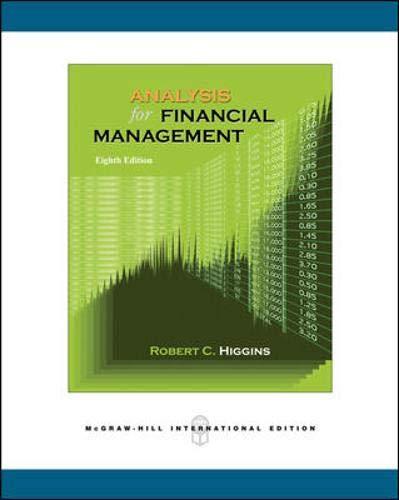Question
Given the following information for Bajor Co.: Debt : Bajors long-term debt capital consists of bonds with 6.250 percent coupon rate (semiannual coupon payments), 9
Given the following information for Bajor Co.:
Debt: Bajors long-term debt capital consists of bonds with 6.250 percent coupon rate (semiannual coupon payments), 9 years time to maturity, and current price of 106.61 percent of its par value.
Preferred stock: Bajor has not issued any preferred stocks.
Common stock (equity):
Bajors equity capital consists of common stocks with the most recent annual dividend of $0.92 per share, and a current stock price of $14 per share.
According to online data sources, Bajors long-term dividend growth (for next 5-Year average, per annum) g = 4.5% per year.
The risk-free Treasury bill return is 3.8%; the market expected return for the stock market on average is 12.3%; and Bajors systematic risk (Beta) is 0.71.
Taxes: The applicable federal-plus-state corporate tax rate for Bajor is 40 percent.
Capital weight: Bajors Market Capitalization amounts to $18.23 billion, and Total Debt amounts to $14.44 billion. You can use such data to estimate the capital weights for equity and debt, respectively (We and Wd).
Time constraint: For any investment projects, Bajor are required by her investors to recover its initial cost within no more than 6 years.
Q1: What is Bajors pretax cost of debt Rd, cost of equity Re, and WACC, respectively? (Hint: For the best estimate of cost of equity Re, you shall apply both CAPM and Dividend Growth Model and then average the two estimates.)
Step by Step Solution
There are 3 Steps involved in it
Step: 1

Get Instant Access to Expert-Tailored Solutions
See step-by-step solutions with expert insights and AI powered tools for academic success
Step: 2

Step: 3

Ace Your Homework with AI
Get the answers you need in no time with our AI-driven, step-by-step assistance
Get Started


